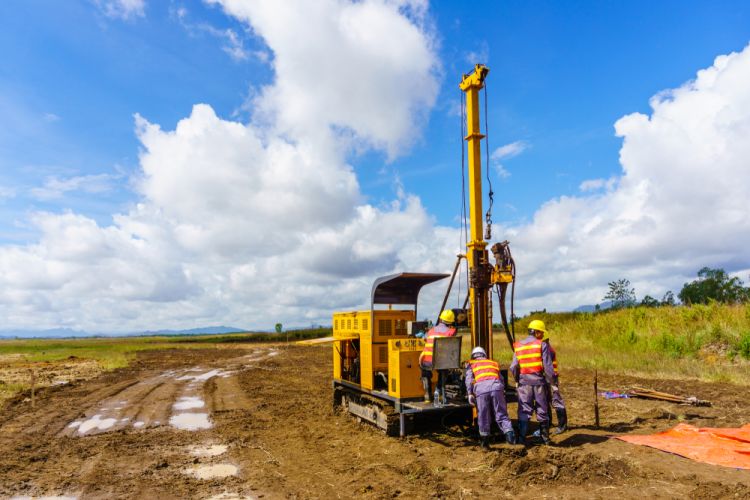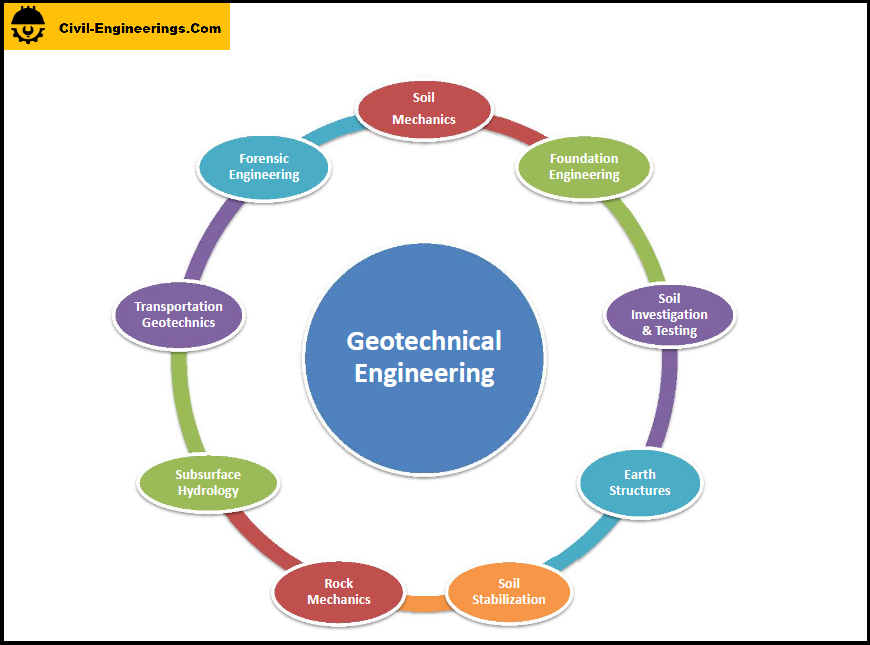The smart Trick of Geotechnical Engineering For Construction Projects That Nobody is Discussing
The smart Trick of Geotechnical Engineering For Construction Projects That Nobody is Discussing
Blog Article
The Greatest Guide To Geotechnical Engineering For Construction Projects
Table of ContentsNot known Details About Geotechnical Engineering For Construction Projects The Best Guide To Geotechnical Engineering For Construction ProjectsGeotechnical Engineering For Construction Projects for BeginnersGeotechnical Engineering For Construction Projects Fundamentals ExplainedGeotechnical Engineering For Construction Projects Things To Know Before You BuySome Ideas on Geotechnical Engineering For Construction Projects You Should KnowThe Only Guide for Geotechnical Engineering For Construction Projects
Principles and Method of Ground Enhancement. Ground Improvement Principles And Applications In Asia. Style analysis in rock technicians.Cengage Learning, Stamford, 666 p. Atkinson, J., 2007. The auto mechanics of dirts and structures. The Observational Approach in ground design concepts and applications.
Geotechnical Engineering For Construction Projects Things To Know Before You Buy
Lab and field screening plays a crucial role in this procedure. By extracting examples from the earth's subsurface and applying a suite of examinations, geotechnical engineers can predict the behavior of dirt layers and examine their suitability for numerous building endeavours. The essence of geotechnical engineering in civil engineering can not be overemphasized, attributable to a number of elements: The first step in any type of geotechnical study entails figuring out the soil type at the construction website.
Understanding these qualities makes certain that only suitable soil kinds are selected for the growth, thereby averting possible architectural failings. The foundation serves as the bedrock of any construction task. Selecting the appropriate structure type is a choice that pivots on the extensive analysis provided by geotechnical engineering. This ensures the durability and stability of structures by accommodating the tons they will certainly birth.

Geotechnical site investigation is an important action in the planning and implementation of any building project. It includes the collection and evaluation of information associated with the physical residential properties of dirt and rock below a recommended building site. This details is crucial for the style and building of risk-free, steady, and lasting frameworks.
Some Ideas on Geotechnical Engineering For Construction Projects You Need To Know
, likewise recognized as subsurface exploration, entails a series of activities intended at determining the soil, rock, and groundwater problems at a construction website. The key objectives are to determine possible geotechnical hazards, examine the design homes of subsurface products, and provide suggestions for the layout and building and construction of foundations, maintaining wall surfaces, and other frameworks.
This might consist of geological maps, airborne photos, previous examination records, and historical data. The desk research study assists in recognizing prospective geotechnical problems and intending the succeeding fieldwork. Adhering to the workdesk study, a site reconnaissance is conducted to visually examine the website and its environments. This involves observing the topography, drainage patterns, existing structures, greenery, and any type of indicators of instability or erosion.
Not known Facts About Geotechnical Engineering For Construction Projects
Superficial test pits are dug deep into to straight observe and example the dirt and rock. This technique is beneficial for examining the upper layers of the subsurface and recognizing near-surface dangers. Non-invasive geophysical techniques, such as seismic refraction, ground-penetrating radar (GPR), and electrical resistivity tomography (ERT), are made use of to map subsurface conditions hop over to these guys and spot abnormalities.
Soil and rock examples gathered during the field examination undergo laboratory testing to establish their physical and mechanical residential or commercial properties. Common lab tests include grain size evaluation, Atterberg limits, compaction examinations, triaxial shear examinations, and debt consolidation examinations. These tests give essential information for geotechnical analysis and style. The information collected from the workdesk research study, website reconnaissance, field examination, and research laboratory testing are assessed and translated to create an extensive understanding of the subsurface problems.
The investigate this site primary benefit of geotechnical website investigation is making certain the safety and stability of structures. By comprehending the subsurface conditions, designers can design structures and other architectural elements that can stand up to the lots and ecological pressures they will be subjected to. This lessens the threat of negotiation, decrease, and architectural failing.
How Geotechnical Engineering For Construction Projects can Save You Time, Stress, and Money.
As an example, understanding soil features can assist the selection of excavation methods, dewatering techniques, and ground improvement measures. This guarantees efficient and safe building methods. Geotechnical website investigations are commonly needed by building codes and policies. Abiding by these needs guarantees conformity with lawful and safety and security criteria, preventing possible legal liabilities and project hold-ups.
This info is indispensable for task managers, designers, and professionals in establishing realistic timetables, budgets, and contingency strategies. Geotechnical Engineering for Construction Projects. High-Rise Structure in a Coastal AreaIn a seaside city, a high-rise domestic structure was intended on a website with thought loosened sand deposits and a high water table. An in-depth geotechnical investigation, including borehole exploration, CPT, and geophysical surveys, was carried out
The smart Trick of Geotechnical Engineering For Construction Projects That Nobody is Talking About
Based upon these searchings for, the structure style was customized to include deep pile structures prolonging into stable strata, and ground renovation strategies, such as vibro-compaction, were applied to minimize liquefaction threats. This positive technique made certain the safety and security and security of the structure while preventing pricey post-construction removal. Framework Advancement on a Sloping TerrainA significant framework task, involving the building and construction of a freeway and bridges, was intended on an uneven terrain with steep slopes.

The Leaning Tower of Pisa (Italy), a legendary building marvel, is wikipedia reference well known for its unplanned tilt from substantial geotechnical concerns. The tower's foundation was improperly developed to handle the soft, unpredictable dirt below it, leading to irregular settlement and its distinctive lean. Our globe is dotted with impressive framework projectsfrom towering high-rises to stretching bridgesall standing statement to the evolution of the numerous construction tools and techniques available.
Geotechnical engineering is a specialized area within civil design that concentrates on studying the habits of earth products. This branch delves deep right into the groundinvestigating how the soil, rock, and groundwater at a building website can influenceand be influenced bythe framework that we erect on and into them. Before a single block is laid or a concrete foundation put, geotechnical engineers probe into the earthgathering vital information concerning the site's dirt structure, rock framework, and groundwater levels.
The Greatest Guide To Geotechnical Engineering For Construction Projects

is a tool made use of to assess the integrity and load-bearing capability of heaps during setup, leveraging the concept of wave breeding. It enhances building and construction efficiency by supplying real-time analyses, thus making sure risk-free and reliable pile structures. One of the sensible applications of geotechnical engineering includes deciding and carrying out the right methods for foundation building and construction.
Load driving represents greater than the simple act of placing architectural elements into the ground. On the other hand, it is a meticulously orchestrated process of transferring a structure's lots past the much less secure dirt layers more detailed to the surfacedown to the extra substantial strata that lie below. When it comes to pile driving, consider how geotechnical engineers skillfully utilize this method to evenly distribute the structure's weight.
Report this page